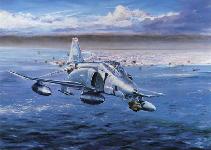




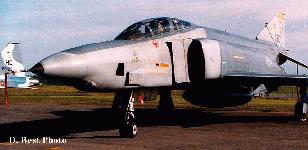 The RF-4 was an unarmed photographic reconnaissance version of the USAF's F-4C which carried a variety of film-based and side-looking radar [SLAR] sensors for the Air Force [RF-4C] and the Marine Corps [RF-4B].
The RF-4 was an unarmed photographic reconnaissance version of the USAF's F-4C which carried a variety of film-based and side-looking radar [SLAR] sensors for the Air Force [RF-4C] and the Marine Corps [RF-4B].
In February 1963 the Marine Corps agreed to acquire the first 9 of what would eventually amount to a fleet of 46 RF-4Bs, a photographic reconnaissance version of the basic F-4 Phantom. The RF-4B was generally similar to the more numerous Air Force RF-4C, with a lengthened nose designed for reconnaissance applications. Three separate camera bays in the nose were designated Stations 1, 2, and 3, and carried a variety of cameras, which unlike the cameras of the RF-4Cs were on rotating mounts so they could be aimed at targets off the flight path.
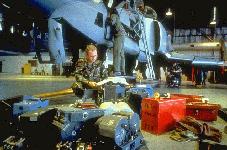 The film could be developed in flight, with film cassettes ejected at low altitude to facilitate rapid processing and exploitation. The RF-4B also carried an AN/APQ-102 [subsequently replaced by the AN/APD-10B SLAR] reconnaissance SLAR antenna faired into the lower fuselage sides. The AN/AAD-4 infrared reconnaissance system was fitted in the fuselage just behind the SLAR.
The film could be developed in flight, with film cassettes ejected at low altitude to facilitate rapid processing and exploitation. The RF-4B also carried an AN/APQ-102 [subsequently replaced by the AN/APD-10B SLAR] reconnaissance SLAR antenna faired into the lower fuselage sides. The AN/AAD-4 infrared reconnaissance system was fitted in the fuselage just behind the SLAR.
Marine Corps RF-4B aircraft were retired in August of 1990, coinciding with the outset of the Gulf War, a move that was subsequently judged ill-timed by many.
The Air Force RF-4C was an unarmed photographic reconnaissance aircraft, with a longer more pointed nose than the standard F-4, accomodating three camera stations:
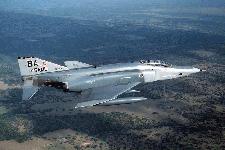
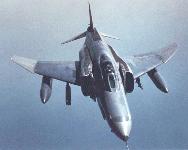
The first production RF-4Cs entered service in September 1964, and the last of 503 production RF-4C was delivered in December 1973. In 1988 the Air Force decided to replace the aging RF-4C Phantom fleet with RF-16s, which would carry an ATARS centerline pod carrying variious sensors, including an electro-optical system to transmit images via digital datalink to a ground station. The RF-4C remained in service at the time of the Gulf War with the Alabama Air National Guard, with the last RF-4C leaving service in 1994.
Late in the afternoon of January 27, 1991, only ten days after the war between Iraq and the Allied Coalition Forces began, aircrews of the 192nd Reconnaissance Squadron, 152nd Reconnaissance Group, Nevada Air National Guard, were called upon to fly north to Kuwait. Their mission was to take pictures of open oil manifolds which were draining crude oil into the Persian Gulf at the order of Saddam Hussein. Equipped with special sensors which provide highly detailed photographs from long distances, the two RF-4 aircraft from the 192nd took off from Sheik Isa Air Base, Bahrain, without fighter escorts. Relying only on their speed and the skills of the aircrews, the "Phantoms" had to enter enemy territory alone and unarmed. The target area was a 40 Kilometer strip of heavily defended coastline adjacent to Kuwait City. Arriving in the target area, the flight leader determined that due to the heavy smoke cover from burning oil wells, the planned high altitude photo run would not work. To obtain usable photos of the area, the flight would have to approach the target area parallel to the coast and below the smoke cover. As the RF-4s approached the objective, they were fired on by anti-aircraft artillery and surface-to-air missiles. Low visibility required the flight to make another pass at the target to insure adequate coverage. Clear photographs were obtained by both aircraft which were forwarded the same night to U.S. Central Command. The following day, these photos were used by Allied fighter-bombers to attack the oil manifolds and stop the flow of crude oil into the Persian Gulf. During the Persian Gulf War, the "High Rollers" of the 192nd Reconnaissance Squadron added to its record of service in four wars and carried on the Air National Guard's proud tradition of service to the nation.
